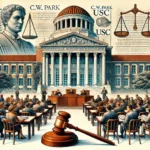Introduction
In the summer of 1969, a small town in upstate New York became the epicenter of a cultural revolution. The Woodstock Festival brought together over half a million people, creating an atmosphere of love, peace, and music. At the heart of this historic event was a photograph that captured the spirit of Woodstock: a young couple wrapped in a blanket, embracing each other amidst the chaos. This iconic image, featuring Nick and Bobbi Ercoline, became a symbol of the era and the counterculture movement. In this article, we will explore the story behind this photograph, why it became iconic, and how the couple’s legacy endures today, cementing their place as “Meet the iconic couple from the Woodstock Album Co – Tymoff.”
Background of the Woodstock Festival
The Woodstock Festival, held in August 1969, was more than just a music event. It was a gathering of a generation seeking peace, freedom, and change. Amidst the political turmoil of the Vietnam War and the civil rights movement, Woodstock became a haven for young people to express their desire for unity and love. Over three days, legends like Jimi Hendrix, Janis Joplin, and The Who performed, solidifying the festival’s place in history.
The festival’s message of peace resonated deeply, making it a defining moment for the counterculture movement. The image of Nick and Bobbi, later featured on the album cover, perfectly encapsulated this spirit.
Who Were Nick and Bobbi Ercoline?
Nick and Bobbi Ercoline were a young couple from New York in their early twenties. At the time of the Woodstock Festival, they were like many others—excited to join a gathering that promised music, community, and a break from societal norms. They hadn’t planned to become symbols of an era, but fate had other plans. Wrapped in a blanket, they stood together in a quiet moment of affection, embodying the love and unity that Woodstock represented.
The Spontaneous Photo Shoot by Burk Uzzle
The photograph of Nick and Bobbi was captured by Burk Uzzle, a photographer working for LIFE magazine. Uzzle’s mission was to capture the essence of the Woodstock Festival, and he found that essence in the couple’s embrace. Unlike staged photos, this was a spontaneous moment that showcased the raw, genuine connection between two people amidst a sea of festival-goers. It was early in the morning, and the couple was wrapped in a quilt, standing in the muddy field. This simple, intimate image resonated with Uzzle, and he knew it captured the spirit of the festival perfectly.
Why the Woodstock Album Cover Became Iconic
When the Woodstock album was released, the photograph of Nick and Bobbi graced the cover, and it became an instant classic. But why did this particular image resonate so deeply? The answer lies in its authenticity. The photograph wasn’t just of two people; it was a representation of the ideals that the festival championed: love, peace, and unity.
In the midst of political unrest and the Vietnam War, the image symbolized a peaceful alternative. It showed that amidst conflict, there was still room for connection, love, and togetherness. The simplicity of the image—two young people embracing—became a visual shorthand for the counterculture movement.
Impact of Nick and Bobbi’s Image on Their Lives
For Nick and Bobbi, the fame that came with the Woodstock album cover was unexpected. They didn’t find out about their newfound celebrity until months after the festival. At first, they were surprised and even bewildered. However, they gradually embraced their role as icons of the Woodstock generation. Over the years, they became local celebrities, and people recognized them as “Meet the iconic couple from the Woodstock Album Co – Tymoff.”
Despite the attention, Nick and Bobbi remained grounded. They continued with their lives—Nick became a carpenter and later a building inspector, while Bobbi worked as a school nurse. Their story, however, became intertwined with the Woodstock legacy, and they often participated in anniversaries and events celebrating the festival.
The Cultural Significance of Album Covers in the 1960s
The 1960s was a transformative time for music, and album covers played a crucial role in defining an artist’s image and message. The Woodstock album cover wasn’t just an image; it became a cultural artifact that symbolized the movement of its time. In an era where visuals were powerful tools for communication, the image of Nick and Bobbi was used not just to sell an album but to convey a message of hope and unity.
Album covers like these helped shape public perception, and the image of Nick and Bobbi became synonymous with the spirit of Woodstock. It wasn’t just about music; it was about the power of love and unity in challenging times.
Woodstock’s Influence on Future Generations
Woodstock paved the way for future music festivals. Events like Coachella, Glastonbury, and Bonnaroo owe a debt to the trailblazing spirit of Woodstock. The image of Nick and Bobbi continues to inspire these festivals, which strive to capture the same sense of community and unity. Today’s music festivals often reference Woodstock as the original counterculture gathering, and its influence is visible in the emphasis on peace, love, and music as a uniting force.
How the Image Shaped the Perception of the 1960s Counterculture
The photograph of Nick and Bobbi did more than just capture a moment; it helped define an entire movement. Their embrace became a symbol of the 1960s counterculture, illustrating the desire for peace amidst chaos. It showed that beyond protests and political turmoil, there was a longing for simple human connection and love. The image’s lasting power lies in its ability to convey these universal themes.
Public Appearances and Involvement in Preserving Woodstock’s Legacy
After becoming symbols of Woodstock, Nick and Bobbi participated in numerous events to celebrate and preserve the festival’s legacy. They appeared in documentaries, exhibitions, and interviews, sharing their experience and the meaning behind the photograph. Their involvement helped educate new generations about the significance of Woodstock and the counterculture movement.
Nick and Bobbi’s continued participation in Woodstock celebrations ensures that the festival’s message remains relevant. They became living embodiments of the ideals the festival championed, reminding people of the power of love and unity.
The Role of Photography in Defining an Era
Burk Uzzle’s photograph of Nick and Bobbi illustrates the power of photography in capturing and defining cultural moments. Visual documentation played an essential role in immortalizing the events of the 1960s, from civil rights marches to anti-war protests. The Woodstock image, in particular, showed how a single moment could become a symbol of an entire movement.
Photography has the ability to transcend time, and Uzzle’s image of Nick and Bobbi does just that. It allows viewers to feel the spirit of Woodstock even decades later, demonstrating the lasting impact of a well-captured moment.
Lessons from Nick and Bobbi’s Story: A Reflection on Love and Unity
Nick and Bobbi’s story is more than just a snapshot in time; it’s a reminder of the enduring power of love and connection. Their photograph became iconic because it represented the values of a generation that sought peace and unity in a divided world. Even today, their image resonates as a symbol of hope.
Their ongoing relationship—now lasting over 50 years—adds depth to the story. It shows that Woodstock wasn’t just about music; it was about forming bonds that could withstand the test of time. Their story continues to inspire people, reminding us that love and unity are timeless ideals that can bring people together, regardless of the era.
Conclusion
The story of Nick and Bobbi Ercoline, the iconic couple from the Woodstock album cover, transcends time. Their spontaneous embrace, captured by Burk Uzzle, remains a powerful symbol of the counterculture movement and the ideals of peace, love, and unity. From their unintentional rise to fame to their continued involvement in preserving Woodstock’s legacy, Nick and Bobbi’s story reminds us that the power of human connection is timeless. As we look back on Woodstock, their image serves as a reminder that amidst chaos, love and unity can prevail.


